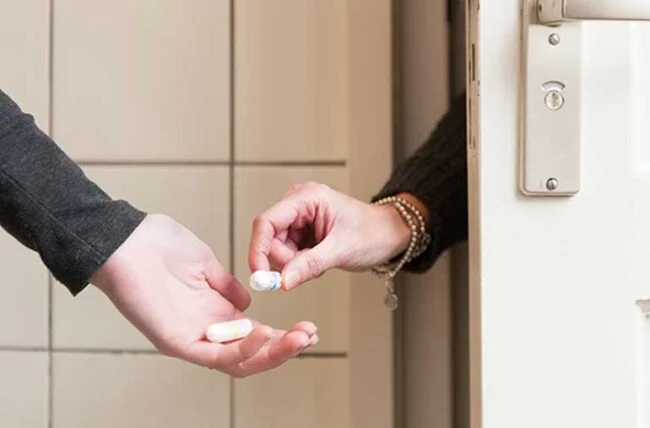All of us are born helpless creatures that rely on others for every. Human infants are very vulnerable creatures who depend on others for everything.
Research from over five decades shows that the emotional bond you form with your first caregiver, often your biological parent, can have a direct impact on the quality of your romantic relationships in the future. Baby’s whose caregivers are dependable and provide devoted attention to them tend to develop more stable relationships in the future. Infants with less attentive caregivers will have more trouble forming healthy adult relationships.
The “attachment” theory is a well-studied concept which has been gaining a lot more attention in recent years. Coda Derrig PhD is a clinical psychologist who says that it can help us better understand ourselves and the reasons why we act the way we do towards the people we care about.
Your attachment style can affect your relationships with others. “But as humans, we are complex creatures,” says Dr. Derrig. There are many other factors involved. All of us have a variety of experiences that affect our ability to develop healthy relationship with time.
We spoke with Dr. Derrig to learn about the attachment styles, how they are formed and how you can influence your adult relationships.
What is attachment theor?
A long list of scientific publications categorizes the way we form emotional bonds with our primary caregivers for our safety and survival.
The most famous experiment is the Strange situation, from 1969. This experiment gave us the four attachment styles we know today. In this study, the babies and their mother played together in a small room. Parent left the room and returned a few moments later. The baby was then observed to see how he reacted.
The four different attachment styles identified in the study were:
- Secure attachment : When their parents leave, babies become upset and are comforted when they return.
- Anxious Attachment: The baby would become upset and difficult to calm down when the parent returned.
- Avoidant Attachment: Babies barely react or do not react when their parents leave or return.
- Disorganized Attachment: Babies reacted in a more uncoordinated or erratic manner to the parent’s departure or return, for example by hitting their heads or “freezing” up.
Dr. Derrig says that the baby’s response to the parent’s return and departure tells a lot about their comfort level with their caregiver. These experiences will likely affect how they interact with others as adults.
Baby’s who have a strong attachment to their parents are concerned about them leaving and comforted when they return. Babies who have learned that their parents won’t be attentive to them are less concerned about their absence, and are less comforted when they return. The babies have learned that they cannot rely on the caregivers to give them what they need. Therefore, their presence or absence is not as important to them.
There are four different attachment styles
The Strange Situation experiment has produced four distinct styles. One of these styles is secure attachment. Insecure attachment styles include the other three — avoidant, anxious and disorganized.
You may not identify with one particular style. Each style is a part of a spectrum. Your style might fall into a category, but it may be extreme or more moderate in the way that it impacts your relationships.
Dr. Derrig explains the four different attachment styles, and how these can affect your romantic relationships in adulthood.
Secure attachment style
We all want secure attachment. Dr. Derrig states that babies who have a secure attachment to their primary caregiver will be more likely to grow up to form healthy relationships and to be loving and reliable partners.
How does it develop? When their caregivers meet the baby’s emotional and physical needs consistently, babies form secure attachments. Securely attached babies prefer their primary caregiver to other people, and they are calmed in their presence.
What is it like to be in an adult relationship? Secure attachment styles are better able to create healthy and long-lasting relationships. They are more likely to be open and honest with their partner.
How common is it? About 58% of adults have a secure attachment, according to studies.
Tip to people with a secure style of attachment:Dr. Derrig says a secure attachment doesn’t guarantee smooth sailing in your relationships. She says that two people who are securely attached to each other will start out in a stronger position. However, relationships require work from everyone, regardless of attachment style.
Attachment style – Anxious
Also called preoccupied attachment, anxious-ambivalent attachment or attachment with preoccupation.
A form of insecure attachment, an anxious attachment style occurs when a baby develops a relationship with a caregiver who is inconsistent. The baby is unsure when or if the parent will be physically and emotionally available.
How does it develop? An anxious attachment is more common in babies whose primary caregivers don’t meet their needs consistently. Anxiously-attached babies are aware that they might or might not receive the attention they require, and so they don’t respond well to their caregivers.
What is it like in adult relationships? Partner with an anxious attachment may be perceived as “clingy,” needy, or untrusting. An anxious attachment style is characterized by a constant fear that the person they love will leave them. They may constantly seek reassurance from their partner that their relationship is safe.
How prevalent is it? According to research, about 19% adults have a style of attachment that is anxious.
A tip for people who have an anxious attachment: Dr. Derrig warns people with an anxious attachment that their neediness can drive their partner away. This can lead to feelings of insecurity and anxiety in future relationships.
“People who have an anxious attachment may benefit from ‘rituals’ of separation. This is where partners agree to kiss each other before going out for the day. “I’ll be seeing you tonight,” they say. They also send each other a text message during the day. “They make an effort to acknowledge their departure and that they will return,” Dr. Derrig says. This can give someone with an anxious attachment the confidence that their partner won’t abandon them.
Avoiding attachment style
Also called anxious-avoidant or dismissive attachment.
It can appear that an adult is “lone-wolf” or too self-sufficient. A person with an avoidant style of attachment is likely to be reticent to engage in emotional discussions, whether it’s about their feelings or the feelings of others. A lack of emotional connection or support between the primary caregiver and baby is often the cause of an avoidant attachment style.
How does it develop? When a caregiver fails to provide emotional support for a child, avoidant attachment can develop. Most likely, the caregiver will only respond to a baby’s physical needs like bathing and feeding, but not their emotional needs. In this environment, the child learns to take care of their own emotional needs.
What is it like to be in an adult relationship? Adults with a avoidant attachment style are often seen as emotionally independent and self-reliant. They are unlikely to understand or seek out emotional comfort for their partner.
How prevalent is this attachment style? According to research, about 23% adults have an avoidant type of attachment.
Tip to people who avoid attachment:Dr. Derrig points out that people who have an avoidant style of attachment often distance themselves and believe others will disappoint. It will take a lot to actively observe your emotions and consider how you distance yourself from others. This effort will help you understand your own style and how to open up to others.
Attachment style that is disorganized
Also known as fearful avoidant attachment.
The most extreme form of attachment is disorganized attachment. Disorganized attachment is characterized by irrational behavior, unpredictable behaviour and intense relationships.
How does it develop? It is often caused by a traumatic childhood, often marked by fear and trauma. This is usually caused by an incoherent or erratic relationship between the baby and his primary caregiver.
What is the adult relationship like? Adults who have disorganized attachments may suffer from mental disorders or personality disorders which prevent them from forming healthy relationships. These adults may crave close relationships, but they’ll push away others when they pay them attention.
Tip to help people who have an avoidant attachment:Dr. Derrig says that some people with a disorganized style of attachment can benefit from Dialectical Behavior Therapy, a form of talk therapy. This is especially useful for those who experience intense emotions.
What attachment styles do adults have?
Your attachment style, and how well it fits with the style of your partner, has a big impact on your ability develop a healthy relationship.
Researchers have found that attachment styles affect:
- Communication between partners.
- The risks of relationship violence.
- Overall marital quality.
Research shows that the way you attach to your children is also a major factor.
If you interview the birth parents and determine their style of attachment, you will have a better idea how their baby will attach to them,” says Dr. Derrig. We raise our children in the manner that we know how to relate to others, so you can pass on your attachment style to future generations.
How can I tell my attachment style?
You can find a lot of information on the internet that claims to help you better understand your attachment style. You can find a variety of websites and quizzes that will help you understand your attachment style, analyze your relationship and upbringing.
Dr. Derrig advises caution, however, because much of the information that you will find is not scientifically-based.
You can start by reading about attachment styles and examining patterns in your relationships. Dr. Derrig recommends therapy to help you understand yourself better and heal any attachment issues.
She says that psychotherapy is the best way to get to the root of the problem. Talking to a healthcare professional who understands attachment theory will help you better understand your experience and find new ways to cope in your relationships. Knowing your attachment style will make it easier to change.
Labeling yourself or your partner with a certain attachment style may lead to simplifying the complex web of human interactions. Many reasons explain why we behave the way we do. It’s not helpful to both of you if your partner seems emotionally distant at times. Blaming an insecure attachment isn’t the best solution.
Dr. Derrig explains that “our identity and our relationship with others are always more complex than one variable.” “Relationship with other people is the most important and challenging thing we can do in our life.”






















